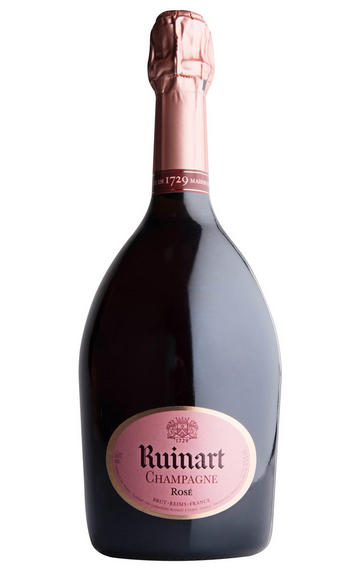
About this WINE
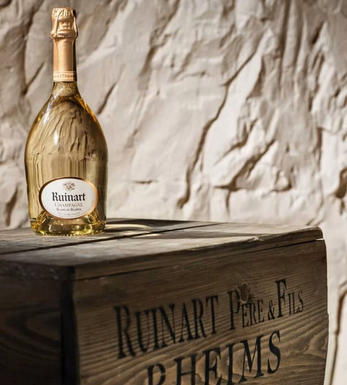
Champagne Ruinart
Ruinart is a low profile, yet select, Champagne house which is steeped in history. It dates back to the 17th century, the time of the famous Dom Pérignon. It was founded in 1729 by Nicolas Ruinart in the city of Reims, the year after a Royal Decree in 1728 whereby Louis XV gave his consent for sparkling wines to be shipped in baskets containing 50 to 100 bottles. This opened the gates of Europe to champagne and thus makes Ruinart the oldest Champagne House. Nicolas' uncle was Dom Thierry Ruinart, close friend to Dom Pérignon himself and an inspiration behind the creation of this house after the Dom’s death. Its Gallo-Roman chalk cellars are now a UNESCO-classified historical monument and every two years the finest sommeliers in Europe gather there to compete for the Trophée Ruinart.
Since the second world war the house has become synonymous with class and its production of only 1.7 million bottles per annum is small compared to other grande marques. It is now part of the LVMH group that also owns Moët & Chandon.
The house style emphasises the pre-eminence of Chardonnay over Pinot Noir and Pinot Meunier.
The 'R' de Ruinart NV contains 40% Chardonnay minimum, with 25% reserve wines. Ruinart Blanc de Blancs is 100% Chardonnay, sourced predominantly from Premier Cru vineyards, while Ruinart Brut Rosé is typically 45% Chardonnay and 55% Pinot, of which 18% is red wine, so following the assemblage, rather than the saignée method of rosé production.
The Dom Ruinart range, named for the spiritual father of the House, represents the prestige cuvées of the house. Dom Ruinart Blanc de Blancs is a Grand Cru Chardonnay, predominantly from the Côte des Blancs (70%) and the remainder from the Montagne de Reims.
Dom Ruinart Rosé champagne has the same basis as the Blanc de Blancs (Chardonnay) to which 15%-20% red wine (Pinot Noir from Verzenay and Verzy) has been added. These are amazingly rich and pure in youth developing red Burgundian notes with long ageing such as in the 1988 or 1990 vintages.
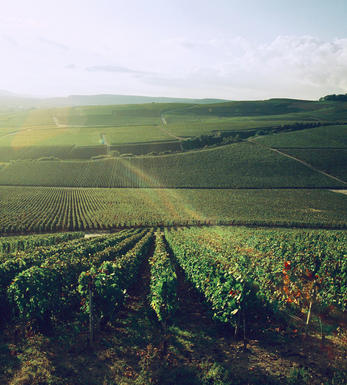
Rosé Champagne
Rosé wines are produced by leaving the juice of red grapes to macerate on their skins for a brief time to extract pigments (natural colourings). However, Rosé Champagne is notable in that it is produced by the addition of a small percentage of red wine – usually Pinot Noir from the village of Bouzy – during blending.
Recommended Producers : Billecart Salmon (Elizabeth Salmon Rose), Ruinart
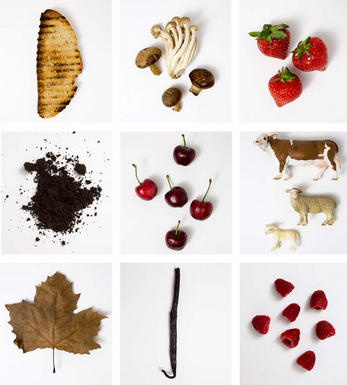
Pinot Noir
Pinot Noir is probably the most frustrating, and at times infuriating, wine grape in the world. However when it is successful, it can produce some of the most sublime wines known to man. This thin-skinned grape which grows in small, tight bunches performs well on well-drained, deepish limestone based subsoils as are found on Burgundy's Côte d'Or.
Pinot Noir is more susceptible than other varieties to over cropping - concentration and varietal character disappear rapidly if yields are excessive and yields as little as 25hl/ha are the norm for some climats of the Côte d`Or.
Because of the thinness of the skins, Pinot Noir wines are lighter in colour, body and tannins. However the best wines have grip, complexity and an intensity of fruit seldom found in wine from other grapes. Young Pinot Noir can smell almost sweet, redolent with freshly crushed raspberries, cherries and redcurrants. When mature, the best wines develop a sensuous, silky mouth feel with the fruit flavours deepening and gamey "sous-bois" nuances emerging.
The best examples are still found in Burgundy, although Pinot Noir`s key role in Champagne should not be forgotten. It is grown throughout the world with notable success in the Carneros and Russian River Valley districts of California, and the Martinborough and Central Otago regions of New Zealand.


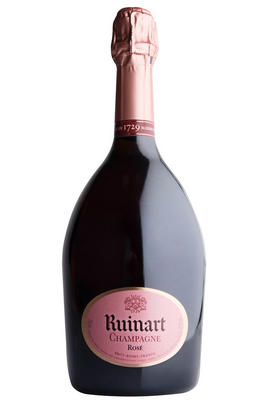
Buying options
Add to wishlist
wine at a glance
Delivery and quality guarantee